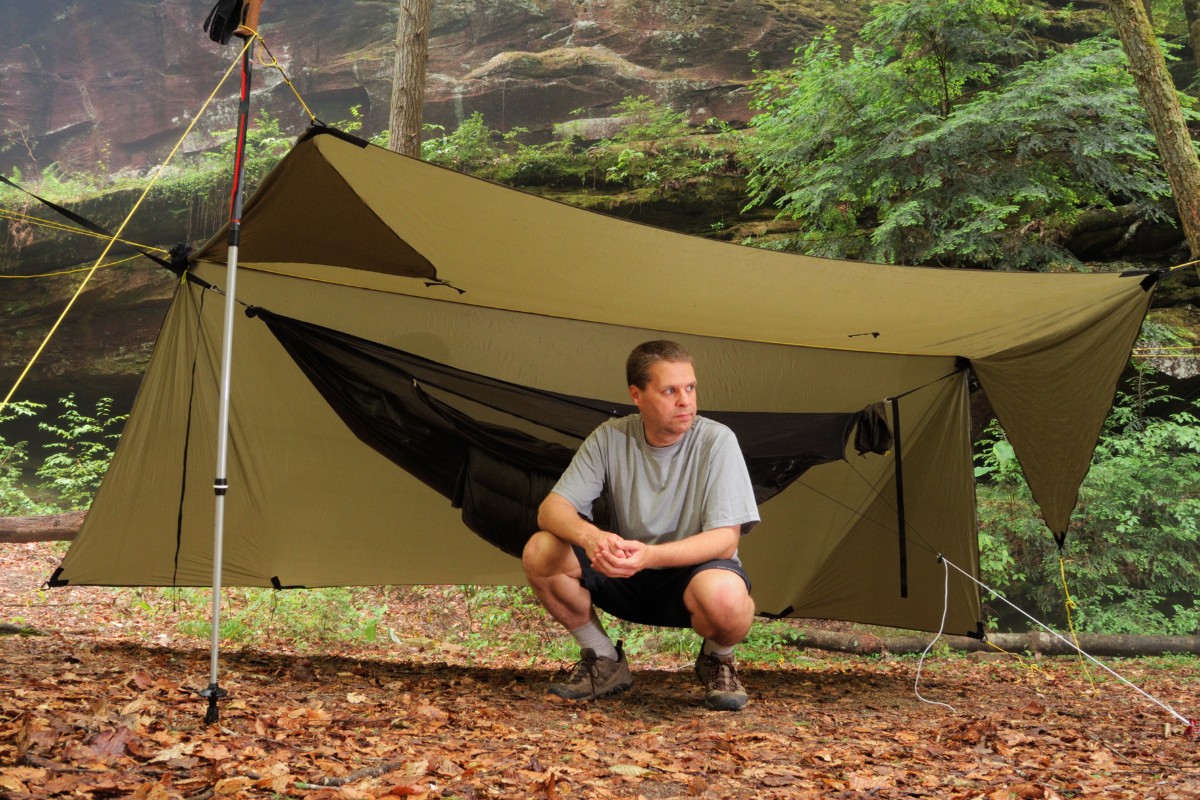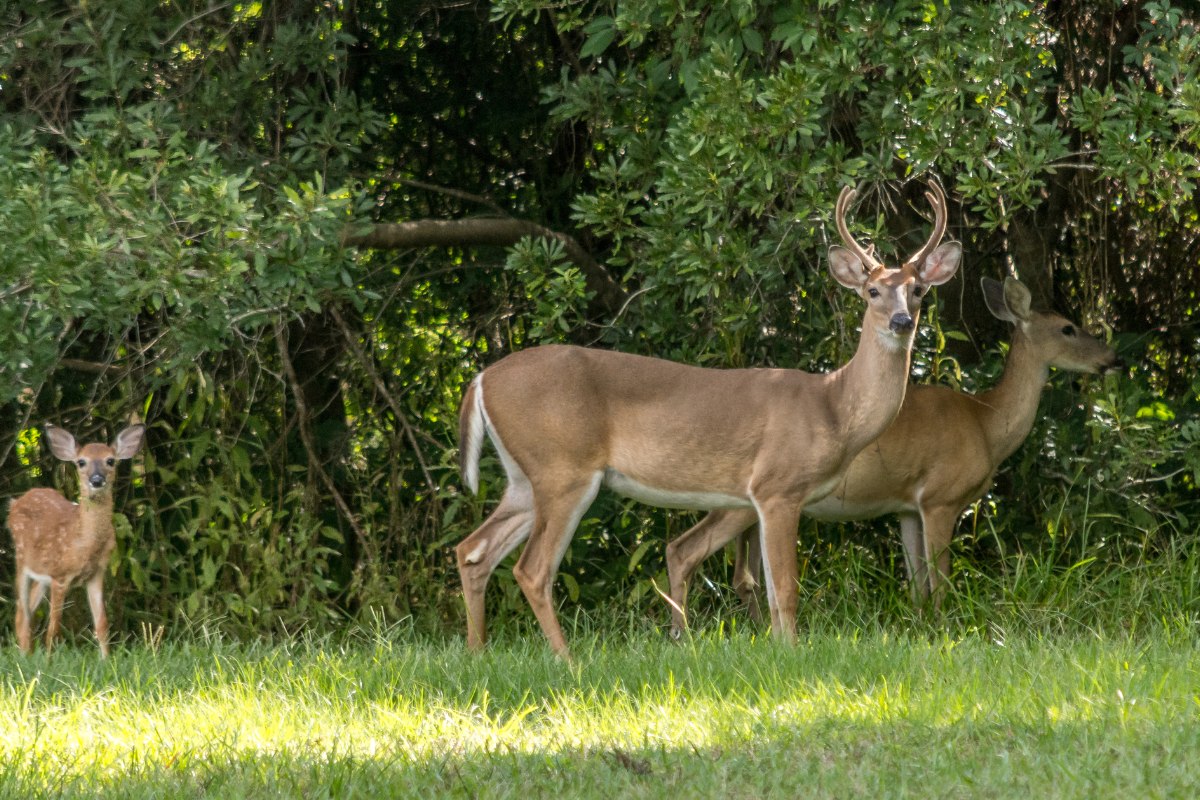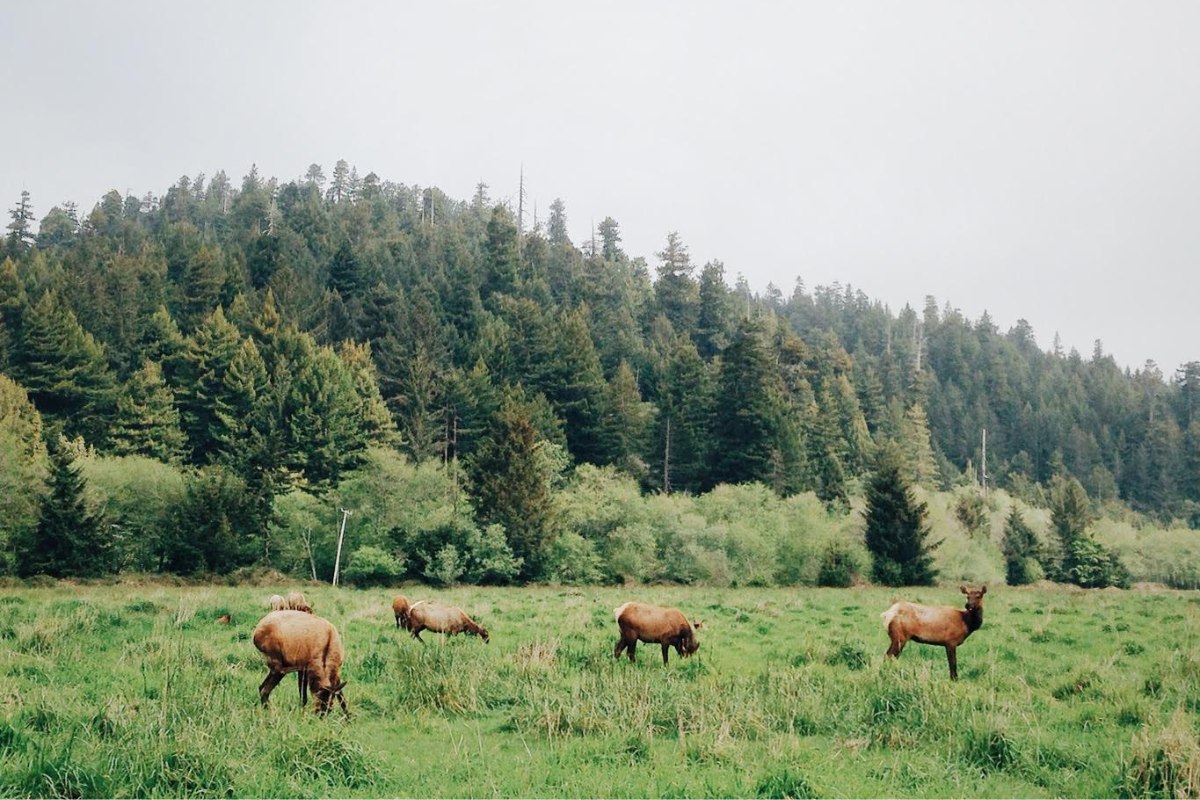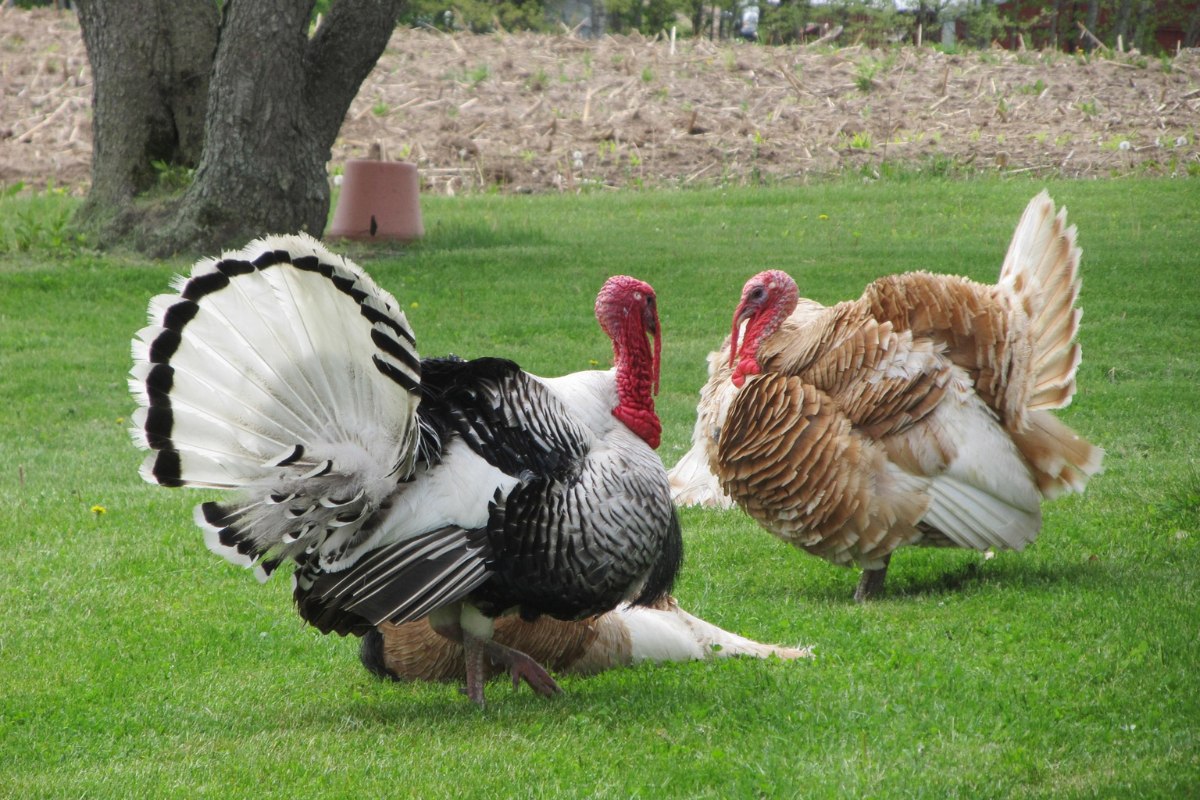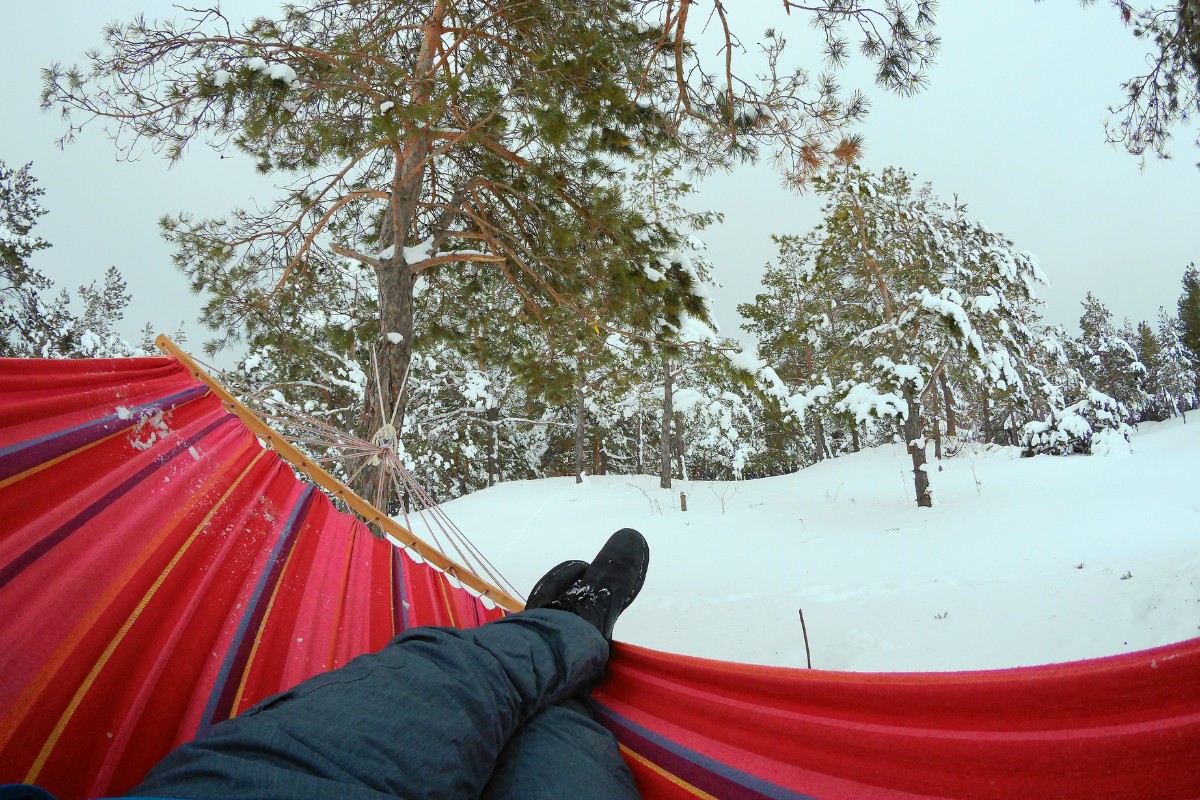What Is a Hammock Tarp
A hammock tarp (also known as a rainfly) is an accessory for hammock camping that protects campers from wind, rain, ice, and other harsh weather, or creates a relatively private place for hammock hangers to rest. It’s a popular hammocking add-on for both novice and veteran campers due to its versatility, flexibility, and lightweight nature, and can be used in all seasons.
If you are starting to learn about hammock tarps and are planning to choose one for your next camping trip, you might encounter various tarps with different types, materials, and sizes, and have no idea which one is suitable for you. In this article, we’ll help you understand the basics about tarps and guide you to pick the one that fits your needs.
Types of Hammock Tarps
There are six main styles of hammock rainflies on the market: asymmetrical, square (or diamond), rectangular, hexagonal, catenary-cut, and winter tarps.
Asymmetrical Tarp
An asymmetrical tarp is made of parallelogram fabric and is hung diagonally over the hammock to form an asymmetrical look. It usually has one tie-out at the side panel for pitching.
Compared with other same-size tarps, it’s the most lightweight, has the least amount of coverage, and provides the most surrounding views from the hammock, making it suitable for backpacking and gram weenies.
Some considerations for asymmetrical tarps:
- It’s mainly designed for vertical rain and breeze. If the downpour or wind comes from the side, it won’t work well for protection. For this reason, if you want to use an asymmetrical tarp for camping, it’s advisable to check the weather forecast for your site before setting off.
- To minimize wind and rain, asymmetrical tarps have more limitations and requirements in site selection. Sometimes it’s hard to find two trees to set it up well for protection. So, it’s not recommended for newbie hammock hangers; hex or rectangular tarps have more room for error.
- It’s not suitable for use in mountainous areas due to swirling wind and changeable weather conditions, nor for winter camping, as you need more coverage to keep warm.
- It’s ideal for daytime resting; some people use it to shade the glaring sunlight and keep birds from crapping on them.
- You are limited to sleeping in line with the direction of the asymmetrical tarp, laying diagonally to cover your head and foot on each panel side.
Square/Diamond Tarp
A square or diamond tarp is made of square-shaped fabric and hung diagonally to form a diamond look. It has one tie-out at each side.
A square tarp is lightweight and has more side coverage than an asymmetrical tarp. It can provide the same level of protection as a rectangular or hex tarp when pitched properly, while costing less in material, tie-outs, and price.
Like the asymmetrical tarp, the diamond tarp is suitable for dry seasons only and will not keep you warm in cold weather. They both have less surface touching the ground, which is beneficial when there is a lot of underbrush at the hanging site.
Because it is hung diagonally at 45 degrees, the ridgeline is 1.4 times longer than the fabric length. For example, an 8′ long tarp has an 11.2′ long ridgeline. So you should consider whether the site has trees that are far enough apart for hanging the square tarp, or if you should replace it with a rectangular or hex tarp for more coverage.
Rectangular Tarp
The rectangular tarp has the best coverage, second only to the winter tarp. It allows you to put the whole side of the tarp down to the ground, making it suitable for cool weather. It has 2 or 3 tie-outs on the side panel, versatile for different pitching methods to change the tarp into a porch or pole mod, creating more room for your hammocking site.
The downsides are also obvious: a) it has more weight than other styles, except the winter tarp. b) The rectangular tarp can’t be pitched tightly, so the side panel will flap in the wind and create noise.
Hexagonal Tarp
A hexagonal tarp is made of hexagon-shaped fabric, hung symmetrically over the hammock, and has two tie-outs on each side panel. It has more weight and protection than asymmetrical and square tarps, but less than a rectangular tarp. It can be pitched a little tighter than the rectangular one, but not as well as the catenary-cut tarp.
It’s suitable for people who like the full coverage of a rectangular tarp but want to save some weight, and it is becoming more popular on the market.
Catenary-Cut Tarp
A catenary-cut tarp looks like a hexagonal tarp, but the edge is curved like a catenary. It often has two tie-outs at the side panel.
A catenary-cut tarp removes the fabric that could flap in the wind, so it’s lightweight and can be pitched tautly, with little noise and fewer wrinkles compared to rectangular tarps. The cat-cut design increases strength and tautness, minimizing the effect of stretching and sagging issues caused by tarps made from stretchy materials like silnylon, which will stretch and sag after getting wet or with long-term use.
For the ridgeline, you might notice some cat-cut tarps have a curved ridgeline in pictures. In fact, it’s not a special cat-cut ridgeline; it’s just because the ridgeline gets forces from the guylines, pulling it into a curved shape. If the forces from the guylines are released, the ridgeline will restore to a straight one.
The biggest challenge for a catenary-cut tarp is setup; it needs an optimal site and angle to rig, otherwise, it will become extremely flappy and noisy. It’s suitable for campers who set the tarp in the same way consistently.
Winter Tarp
A winter tarp, also called an all-season tarp or full coverage tarp, is the biggest and heaviest of all types but has the fullest coverage and best protection, as well as privacy. It usually has extra flaps or doors at the end sides, which are cut out from the fabric and can be enclosed or folded to break the wind and keep the interior room warmer. Most winter tarps have four or more tie-outs at each side panel, two of which are for doors.
Some people might agonize over choosing a winter tarp or other standard tarps without doors due to the extra weight of around 10 ounces for the doors. It depends on the camping site and season. One thing is certain: if you go hammock camping in the winter or cold weather below 50°F, or in a mountain area with swirling wind and unpredictable weather, a winter tarp is definitely the best option. On the other hand, the doors of the winter tarp can be snapped inside to make the tarp a large rectangular or hexagon tarp in the warm season, allowing the breeze to blow inside. So, if you don’t mind a little heavier weight for your gear or often go car camping, the winter tarp won’t let you down in any site and weather conditions.
Nowadays, you can add detachable doors to your rectangular or hexagonal tarp to transform it into a winter tarp. You can buy extra add-on doors from vendors like Warbonnet’s trap door kit or 2QZQ’s grizz beak. These door kits can enclose both ends of the tarp to provide protection in inclement weather, offering more choices to experiment and entertain with your tarps.
Size of Hammock Tarps
Tarp size varies on the market, but the main principle is that the tarp should at least cover the whole body of the hammock.
For tarp length, it should be able to cover the hammock and extend around 12 inches over each end for full coverage. Often, the same length as the hammock body will be fine because the hammock is in a sagging state when hanging up, and most hammock hangers use a structural ridgeline to keep the hammock taut in a constant sag. A typical structural ridgeline has a length of 83% of the hammock body. For example, an 11-foot-long gathered-end hammock with a ridgeline will have a 9-foot length, plus 1 foot extending area at each end, making the total length of the tarp 11 feet, the same as the hammock body length.
For tarp width, it has less effect than length, and most tarps have a width of 6-10 feet, so each panel will be 3-5 feet wide, which is big enough to shed any level of rain and wind. Minimalists prefer smaller panels to save weight, while mountain campers like wider panels for better protection and can even touch the tarp side directly to the ground to form an A-frame shelter mod. Also, bridge-style hammocks need a wider tarp than the gathered-end ones.
Larger or Smaller Tarp: Which One Should I Choose
Larger tarps can have a size of 12’x10′, while smaller tarps can be 8’x6′. The choice depends on the elements of location, weather, experience, and budget. Choose the best one that suits your demand. For a newbie hammock camper, it’s suggested to start with a bigger tarp and gradually decrease the size as you gain experience and skills.
Pros of a Larger Tarp
- A larger tarp offers more protection in unpredictable weather. You can’t forecast the direction of blowing winds and storms, especially in high-altitude and mountainous areas. Keeping yourself dry is the first concern when you go for a long journey camping.
- A larger tarp allows you to have more room out of the rain, where you can hang out with a chair, set a fire to cook, and hang more gear on suspension. Besides, a larger tarp has more pitch options; you can transform it into porch mod, pole mod, or A-frame mod, making it more versatile and flexible. All these will add more comfort to your outdoor camping experience.
Cons of a Larger Tarp
- Heavy weight is the biggest downside. Backpackers and gram weenies should consider twice before carrying it.
- A large size tarp means a longer tarp ridgeline, which adds difficulty in selecting proper trees and hanging spots.
Pros of a Smaller Tarp
- Lightweight, minimal size means less weight and space taken when packed in the backpack.
- A smaller tarp will somehow promote your camping skills and tricks by forcing you to stay dry in any weather and conditions.
Cons of a Smaller Tarp
- Less coverage means limits on using it in harsh weather and cold seasons.
- In the same camping conditions, it requires more effort to pitch well and imposes more freedom restrictions for sleeping and moving around.
Material of Hammock Tarps
Generally, any water and windproof fabric can be made into a hammock tarp. In the early camping days, some people used a blue cheap plastic polyethylene tarp from Walmart, which is too basic and bulky. Some people used spinnaker cloth (short for spinn) for a tarp, which is light and crinkly, a high-end fabric at that time, but it is no longer manufactured.
Today, the most widely-used tarp materials are silnylon/silpoly, PU-coated nylon/polyester, and cuben fiber (also known as “Dyneema Composite Fabric”).
Silnylon and Silpoly
These are two different materials, nylon and polyester, coated with silicone on the surface to repel water. We’re familiar with nylon and polyester, which are widely used in camping hammocks. They have a similar weight level and a minimum 2000mm hydrostatic head waterproof rating. For differences, nylon is more durable and stronger but will absorb water after getting wet, resulting in stretching. Polyester has lower strength but will barely absorb water and stretch, and has better UV protection than nylon.
After being siliconized, silnylon and silpoly inherit the characteristics from nylon and polyester. Like twins, they have similar weight, packing volume, and price. 20D (1.1 oz / yd²) will be strong enough for tarps. Higher denier means more bearing strength but costs more weight.
However, silnylon will still stretch and sag after getting wet, even with dew, and has a tendency to get misty inside. Silpoly doesn’t have these issues and is more UV resistant. So, silpoly has a better comprehensive performance than silnylon and is more recommended.
How to Keep the Silnylon Tarp Taut When Getting Wet
As mentioned above, silnylon will stretch along the bias of the weave when getting wet, reducing tautness and causing the side panels to become saggy and flappy in the wind. It’s annoying and inconvenient to walk outside to tighten the guylines during the night or in the rain.
There are two ways to mitigate this circumstance:
- Use shock cords to tie between tie-outs and guylines. Shock cords function as self-tensioners and can automatically adjust the length when the tarp stretches.
- Use silnylon in a catenary-cut tarp with curved edges. This construction increases tautness and minimizes the effect of stretching.
PU-Coated Nylon and PU-Coated Polyester
These two materials are nylon and polyester coated with polyurethane on the surface to enhance water resistance.
Compared with silicone coating, PU coating has the same level of water repellency, while being cheaper and heavier, and may peel away over time, making it less durable than sil-coating.
For hammock tarps, PU-coated nylon and polyester are good choices and can do the job in all weather conditions. Don’t worry too much about their qualities; some well-known manufacturers, like ENO and Hennessy, offer PU-coated tarps for sale too, and the prices are much lower than sil-coated or cuben fiber tarps. For budget concerns, PU-coated nylon and polyester are still recommended.
Dyneema Composite Fabric
More commonly known as cuben fiber (CF), it’s the most lightweight and expensive material for hammock tarps. Cuben fiber tarps are relatively new on the market. Due to limited availability and a complicated taped and sewn manufacturing process, the price is far higher than silicone or PU-coated materials.
Pros of Cuben Tarps
- The most remarkable advantage is weight saving. For two similar-sized, 12′ long ridgeline asym tarps from DutchWare, a tarp made from silpoly weighs more than 10 ounces, while the cuben tarp weighs less than 4 ounces. This is a significant upgrade in minimizing weight, especially for backpackers.
- Absorbs zero water. Nylon and polyester absorb more or less water after getting wet, while dyneema absorbs none, eliminating stretchy issues. It’s also repairable with tape.
Cons of Cuben Tarps
- It’s translucent and doesn’t provide shade. If you are concerned about privacy, the see-through nature of cuben might not satisfy you in the daytime. It can let light in, creating a greenhouse effect inside, making it hot to sleep under in direct sunlight.
- It’s noisier than nylon and polyester in blowing rain and wind due to its crinkly surface, but it will soften up with use.
- It cannot pack down small. The same size cuben tarp has approximately twice the volume of a silnylon tarp. Although it’s super lightweight, it’s a lot bulkier.
- High cost. A similar-sized cuben tarp is nearly twice the price of a silpoly one. You should carefully consider whether the expensive cost is worth the value it provides.
Conclusion
From the above analysis of three aspects of hammock tarps, based on your camping site and weather conditions, you can choose from an asymmetrical tarp’s minimal coverage to a winter tarp’s full coverage. A tarp the same length as your hammock is a good choice. If you are a gram weenie and cost is not an object, cuben fiber will not let you down. For most normal hammock hangers, silpoly and silnylon are nice choices. For low-budget campers, PU-coated nylon and polyester can meet your demand while performing not too much worse than others.
